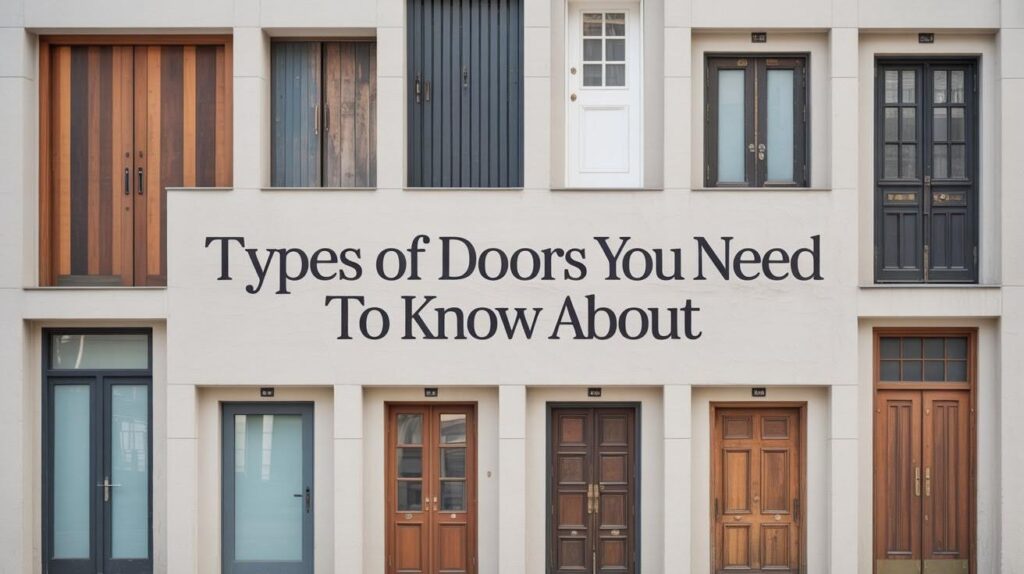Choosing the perfect door to your home should not overwhelm you. With the endless options, it is easy for one to get lost among so many types of doors today.
But here is the thing I have helped homeowners decide on exactly for years and I want to share that I experienced it with you.
This guide explores over 43 different kinds of doors. The doors are organised according to function, material, and design. You will learn all about the modern materials with specialty designs also for sliding options.
Also, I will share some practical tips that can save you money and time in addition to some mistakes for you to avoid.
You’ll know by the end which door fits your budget along with space perfectly.
Choosing the Right Door for Your Home
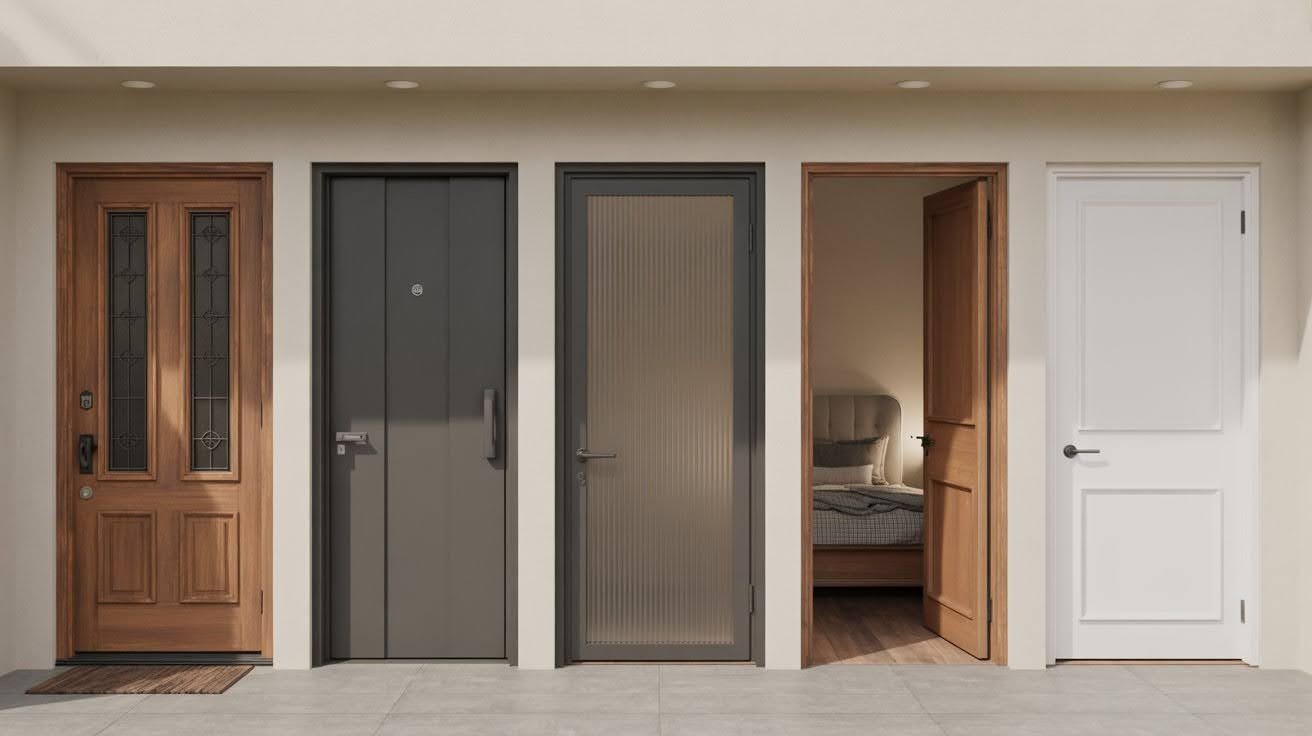
Location matters most when picking doors. Exterior doors need weather resistance and security features. Interior doors focus on style and privacy needs. Purpose drives your choice too. Bathrooms need privacy. Kitchens benefit from easy cleaning. Bedrooms require good sound blocking.
Materials affect both looks and performance. Wood offers warmth but needs maintenance. Metal provides security but can dent. Glass brings light but reduces privacy. The budget sets realistic limits. Quality doors cost more upfront but last longer. Cheap options often need replacing sooner.
Exterior doors must handle weather, break-ins, and daily use. They need solid cores, weatherstripping, and strong locks. Most codes require fire ratings too.Interior doors focus on privacy, sound control, and style. They can use lighter materials and simpler hardware. Cost matters less since they face easier conditions.
Don’t buy doors before measuring openings. Standard sizes don’t fit every home. Custom sizing costs more but prevents headaches.
Avoid choosing style over function. Beautiful doors that don’t work daily will frustrate you. Pick options that serve your actual needs first. Never skip professional installation for exterior doors. Poor fitting leads to air leaks, security issues, and warranty problems. Interior doors offer more DIY options.
List of 45 Types of Doors by Design
Door design affects how they open, close, and fit into your space.
Hinged Doors
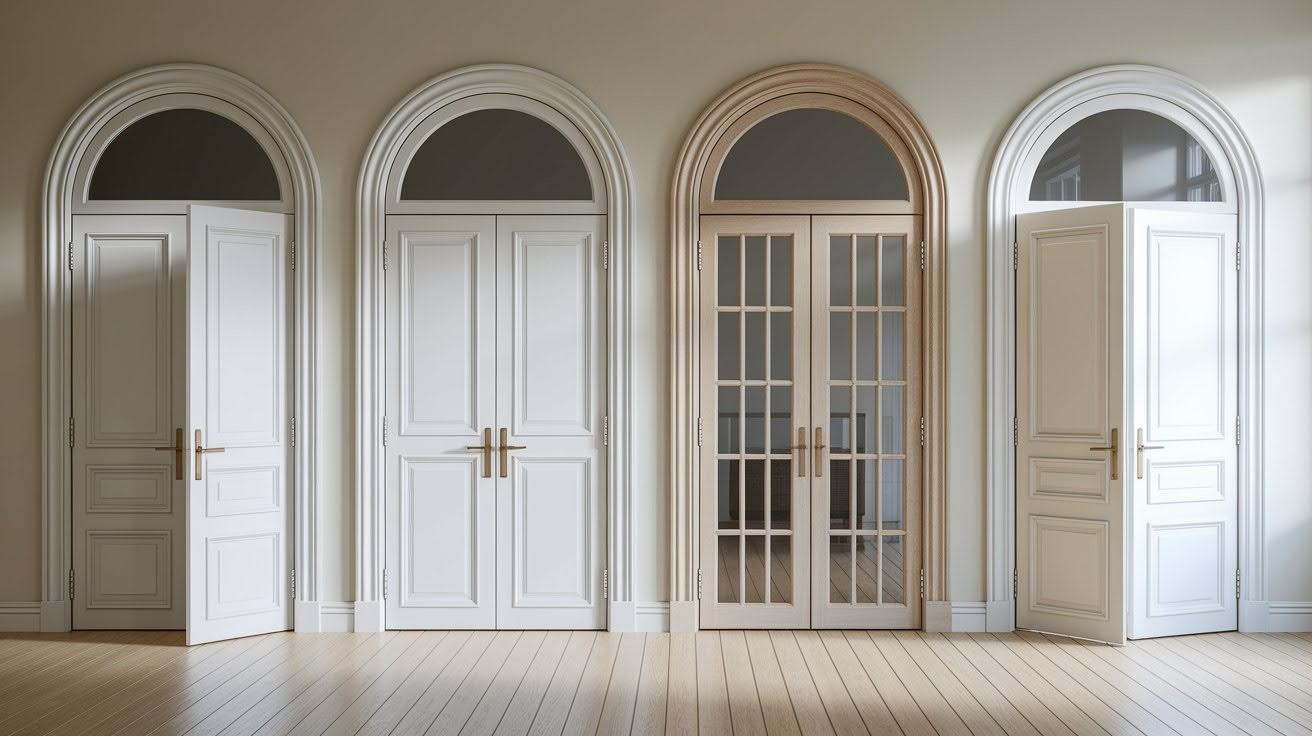
1.Hinged Door (Standard Swing): The most common door type that swings open on hinges attached to a frame, available in left or right-hand configurations.
2.Double Door: Two doors that meet in the middle, creating a wide opening perfect for main entrances or spacious room connections.
3.French Door: Glass-paneled doors with wooden frames, originally from France, bringing natural light to any space you choose.
4.Pivot Door: Heavy doors that rotate on a central pivot point instead of side hinges, offering dramatic style for modern homes.
Sliding Doors
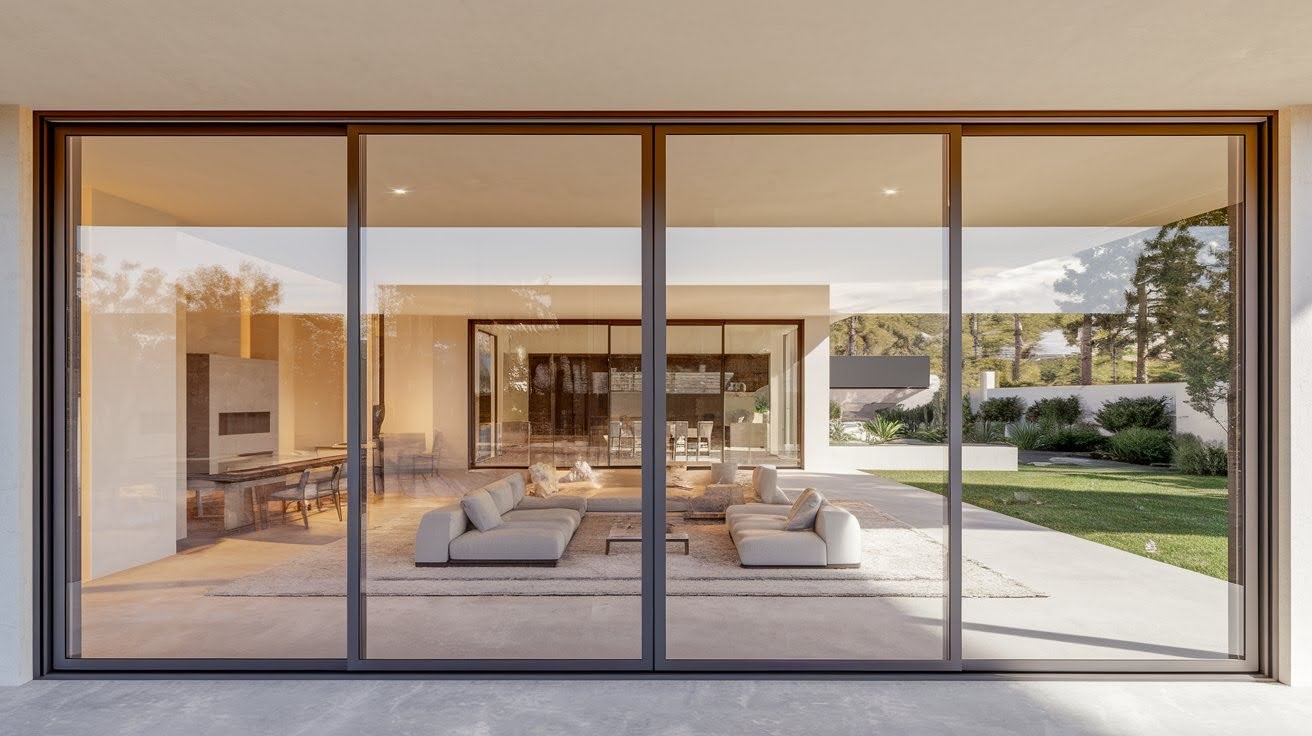
5.Sliding Patio Door: Large glass doors that slide horizontally on tracks, connecting indoor and outdoor spaces while saving interior floor space efficiently.
6.Pocket Door: Doors that slide into wall cavities when opened, perfect for tight spaces where swing clearance poses a problem.
7.Bypass Door: Two or more doors on parallel tracks that slide past each other, commonly used for closets and storage areas.
8.Barn Door: Rustic-style doors mounted on exposed tracks, sliding along walls to create farmhouse charm in modern and traditional homes.
9.Accordion Door: Folding doors with multiple panels connected by hinges, expanding and contracting like an accordion to save significant space.
Folding Doors
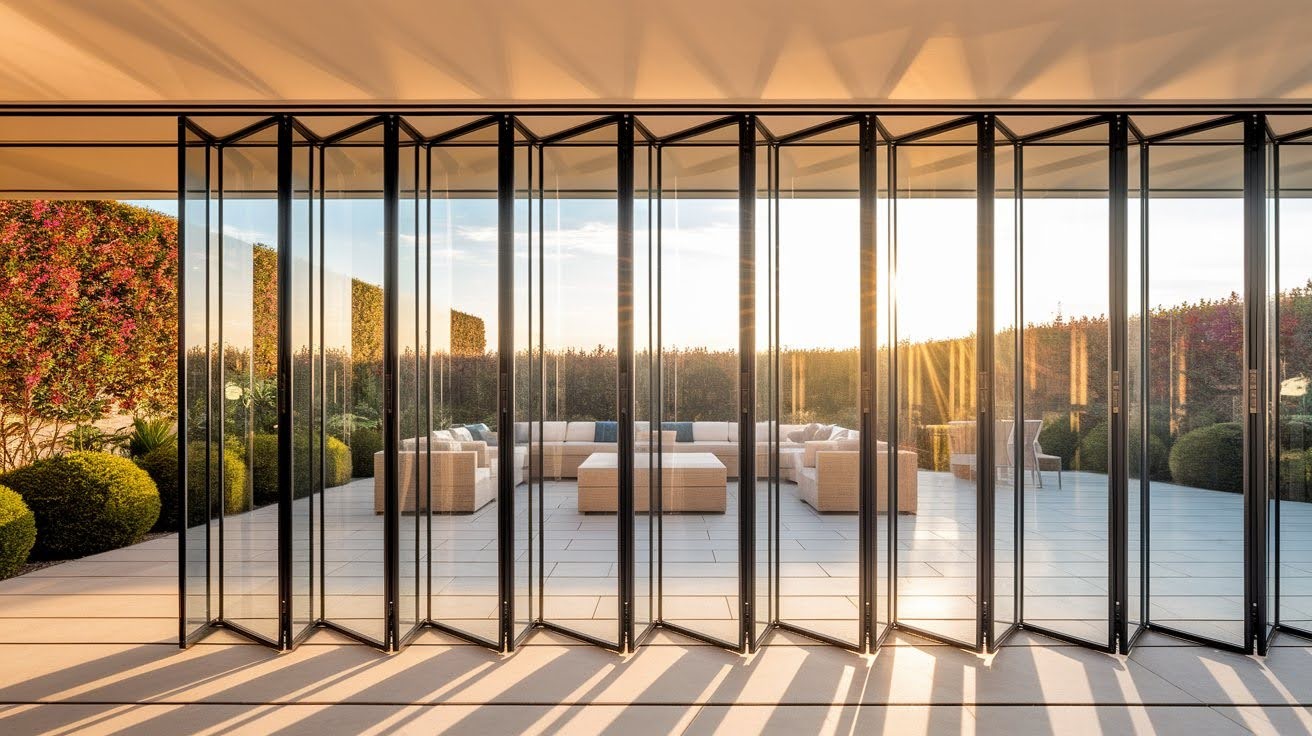
10.Bifold Door: Two-panel doors connected by hinges that fold against each other, popular for closets and small room openings nationwide.
11.Concertina Door: Multi-panel folding doors that compress like a concertina, ideal for wide openings requiring complete closure and space efficiency.
12.Accordion-Style Glass Door: Large glass panels that fold accordion-style, perfect for opening entire walls to patios, gardens, or outdoor entertainment areas.
Specialty Design Doors
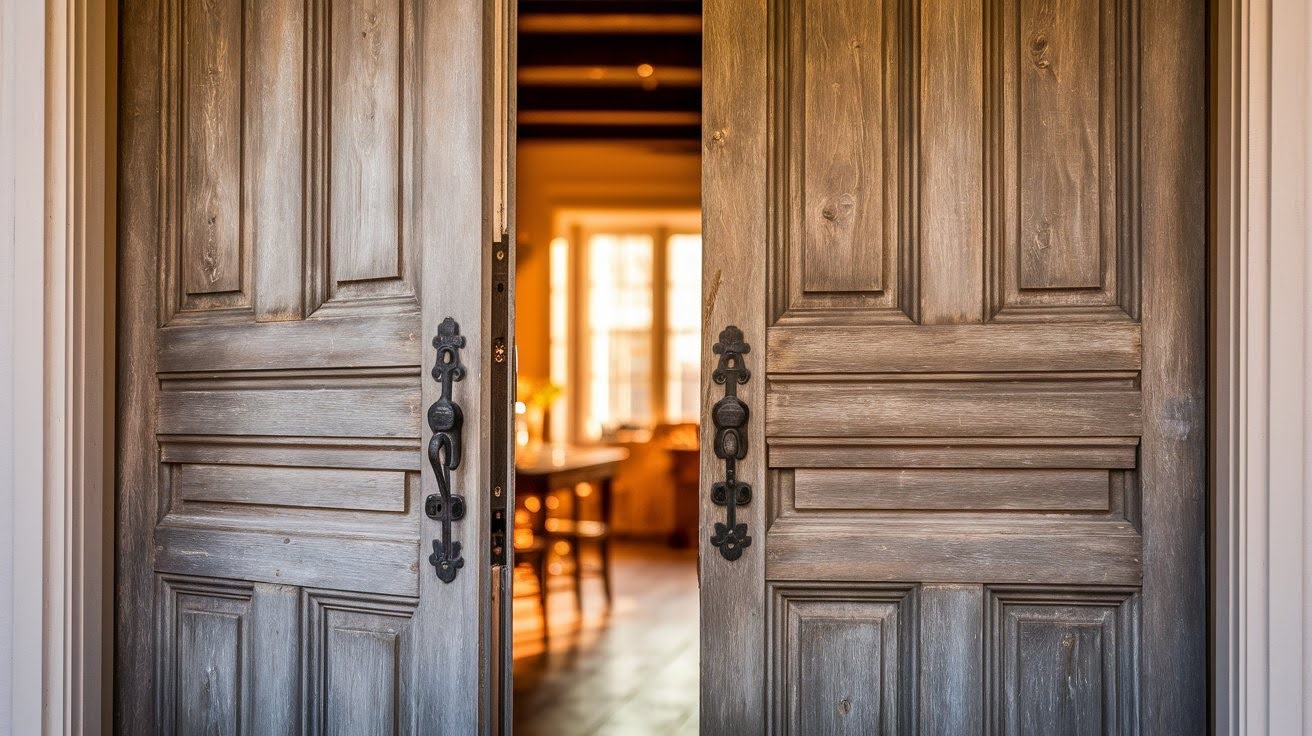
13.Dutch Door: Split horizontally in the middle, allowing the top half to open independently while keeping the bottom half securely closed.
14.Stable Door: Similar to Dutch doors but designed for barns and stables, featuring heavy construction and weather-resistant materials throughout.
15.Panel Door: Doors with raised or recessed panels creating visual interest, available in various configurations from simple to highly decorative styles.
16.Flush Door: Smooth, flat surface doors without panels or decorative elements, offering clean lines perfect for minimalist and contemporary design schemes.
17.Roman Door (arched panel design): Doors featuring curved archways in panel designs, bringing classical Roman architecture elements to residential and commercial building projects.
18.Colonial Door: Traditional American doors with rectangular panels and classic proportions, reflecting the simple style of early colonial architecture and craftsmanship.
19.Tudor Door: Heavy wooden doors with iron hardware and medieval-inspired details, characteristic of Tudor-style homes built during England’s Tudor period.
20.Cottage Door: Charming doors with rustic details like cross-bracing and natural wood finishes, perfect for cozy cottage-style homes and gardens.
Climate & Security
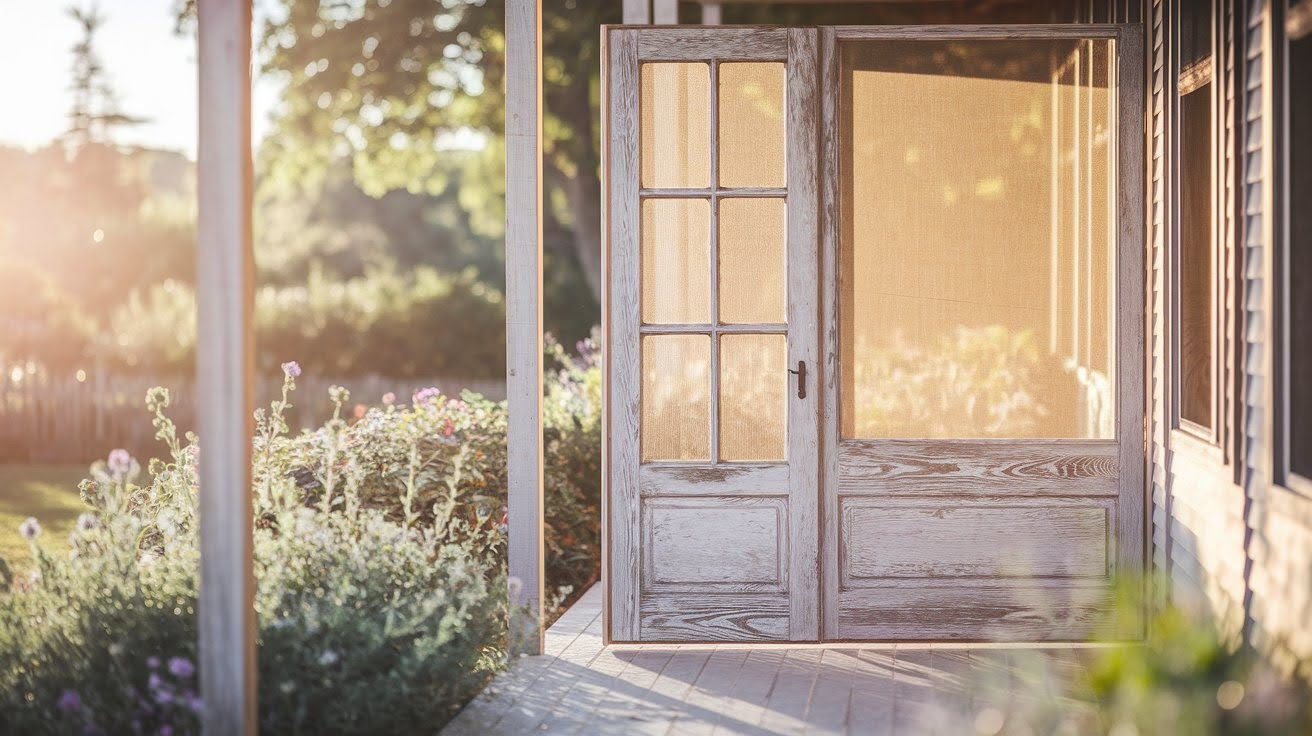
21.Storm Door: Protective outer doors installed in front of main doors, providing extra insulation and weather protection during harsh seasonal conditions.
22.Screen Door: Lightweight doors with mesh screens allowing airflow while keeping insects out, perfect for porches and breezy summer evenings.
23.Security Door (Steel Reinforced): Heavy-duty doors with steel reinforcement and advanced locking systems, designed to resist break-ins and provide maximum home security.
24.Fire-Rated Door: Specially constructed doors that resist fire spread for specific time periods, required by building codes in certain commercial locations.
Privacy & Airflow
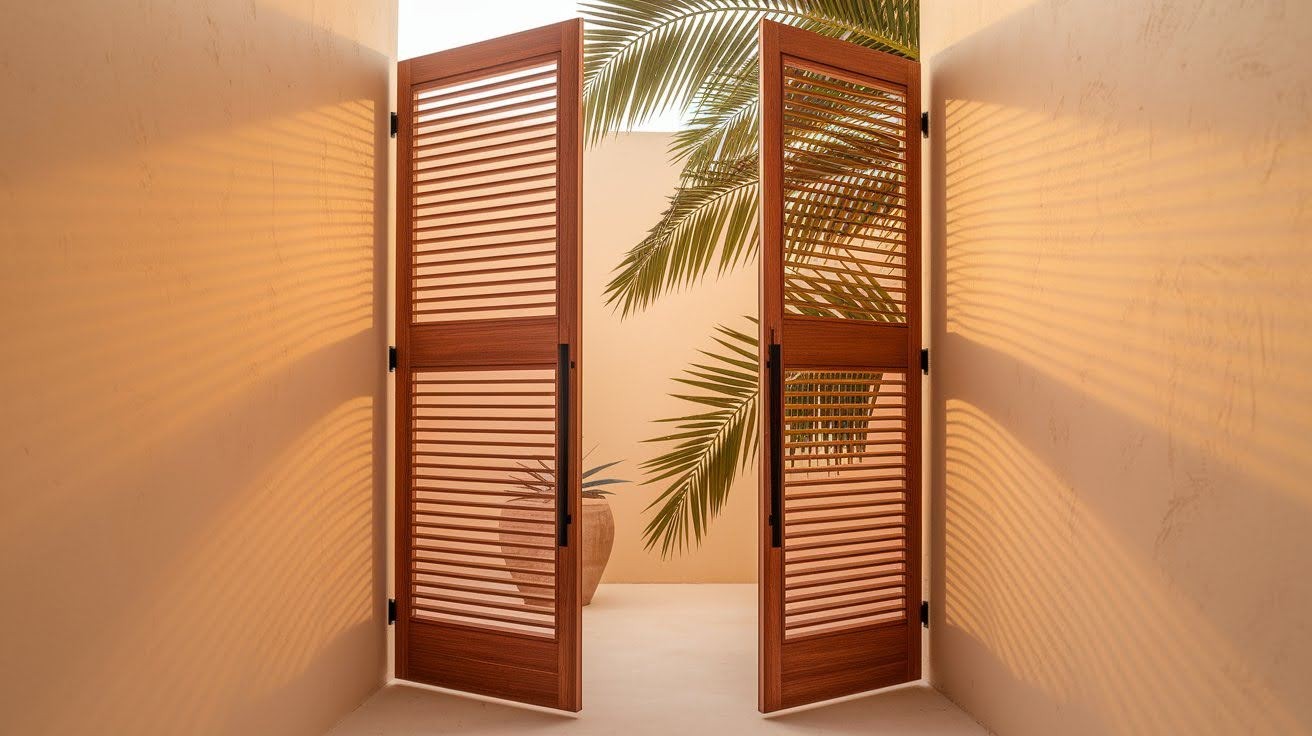
25.Louver Door: Doors with angled slats allowing air circulation while maintaining privacy, commonly used for utility rooms and tropical climate homes.
26.Shoji Door (Japanese Sliding Screen): Traditional Japanese doors with wooden frames and translucent paper panels, creating serene spaces with filtered natural light and privacy.
27.Glass Doors (frameless, frosted, full lite): Doors made primarily of glass in various opacity levels, bringing light into dark spaces while maintaining different privacy degrees.
28.Saloon / Café Door: Short swinging doors that cover only part of an opening, commonly seen in restaurants and kitchens for easy passage.
Space-Saving & Utility
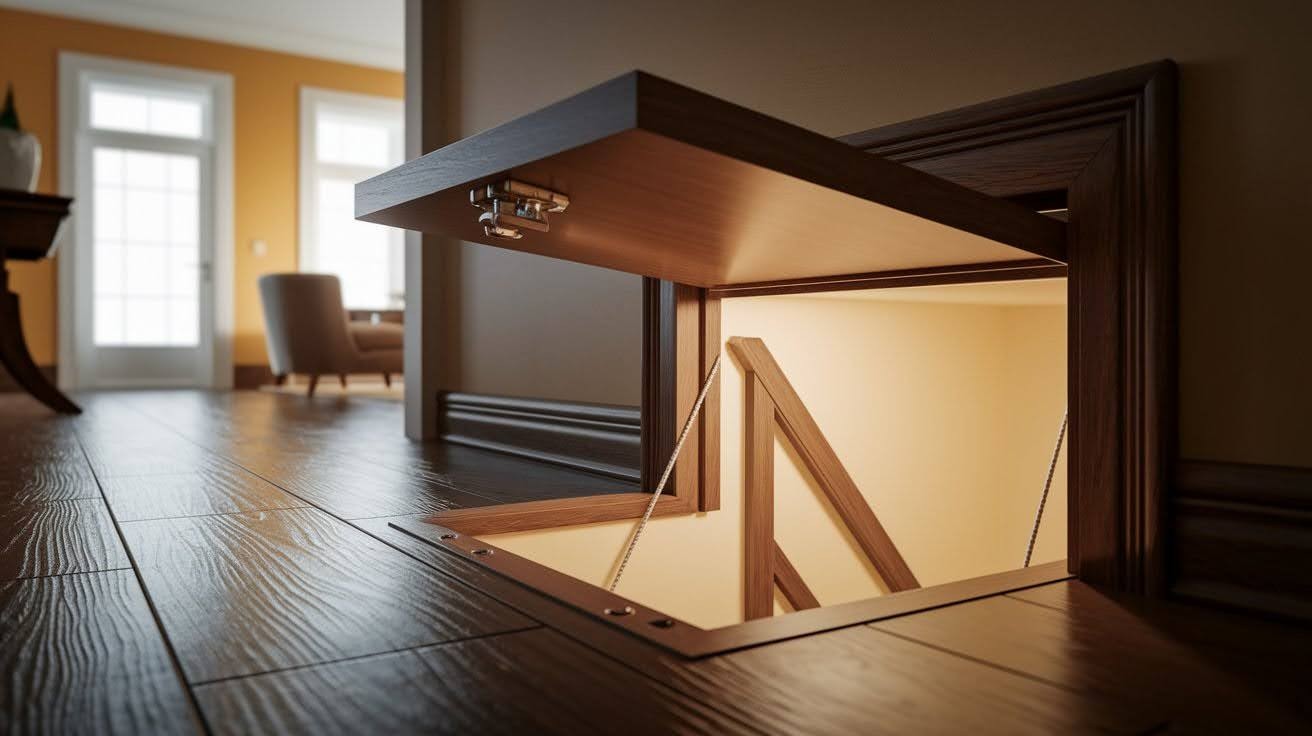
29.Garage Door (roll-up, sectional, tilt-up): Large doors protecting vehicles and storage, available in various opening mechanisms to suit different garage sizes and home styles.
30.Trap Door: Doors built into floors or ceilings providing access to basements, attics, or hidden storage areas in residential properties.
31.Folding Room Divider Doors: Large folding doors that separate or connect rooms, offering flexibility in open floor plans and multi-purpose living spaces.
32.Service/Utility Doors: Simple, functional doors for utility areas like laundry rooms, basements, and mechanical spaces where durability matters most.
Classic & Traditional
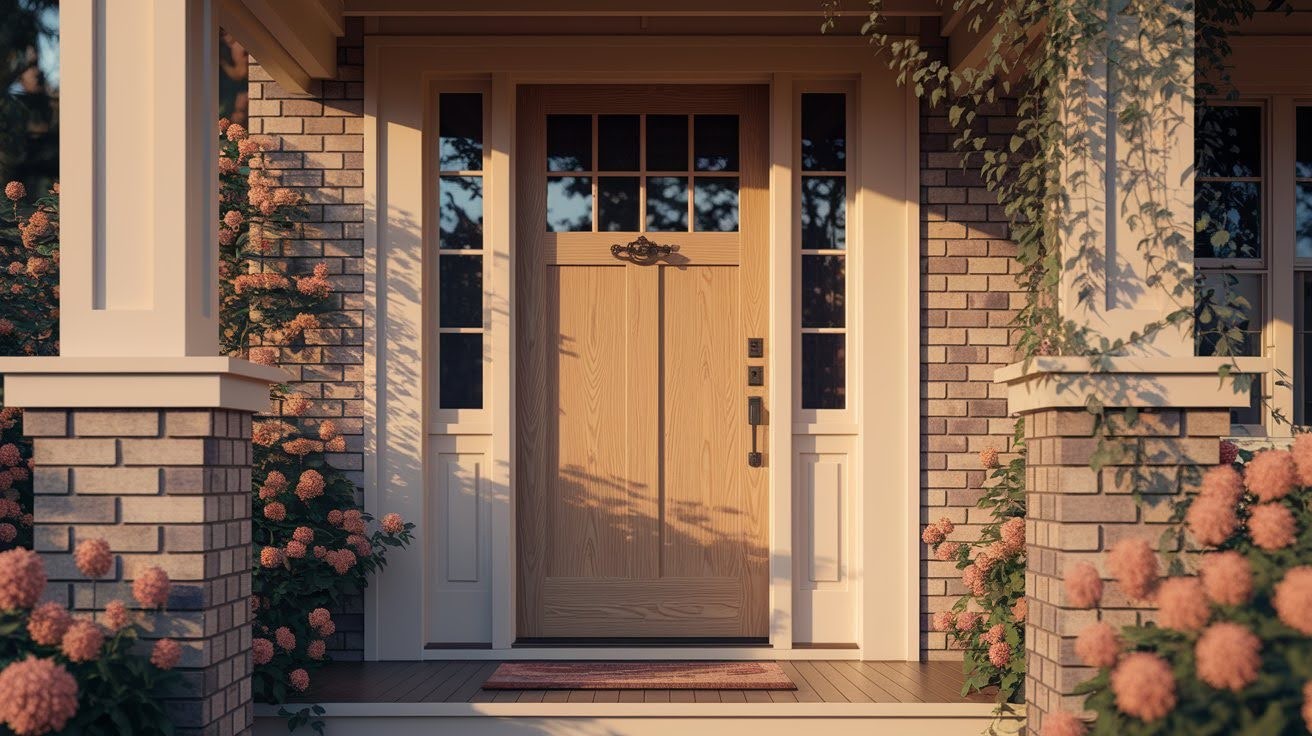
33.Georgian Door: Doors featuring symmetrical panels and classical proportions, reflecting the refined taste of 18th-century Georgian architectural style and craftsmanship.
34.Victorian Door: Ornate doors with intricate details, stained glass, and decorative hardware characteristic of the elaborate Victorian era design and architecture.
35.Craftsman Door: Simple yet refined doors emphasizing natural materials and honest construction, hallmarks of the American Arts and Crafts movement and philosophy.
36.Mediterranean/Spanish Door: Heavy wooden doors with iron details and arched elements, inspired by Spanish colonial architecture and warm Mediterranean coastal living.
37.Carved Wooden Door: Doors featuring hand-carved details and artistic elements, showcasing traditional woodworking skills and creating unique focal points for homes.
Modern & Contemporary
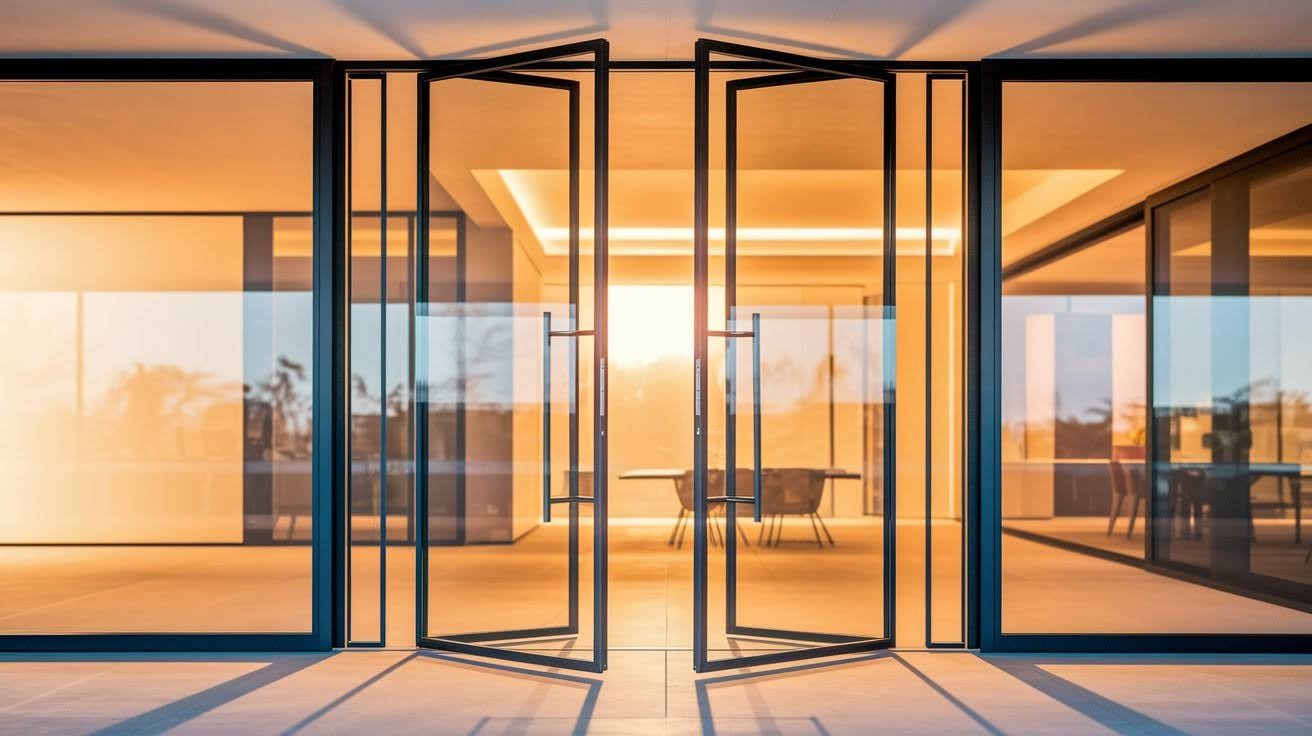
38.Minimalist Flush Door (with hidden hardware): Clean-lined doors without visible hardware or decorative elements, perfect for contemporary homes emphasizing simplicity and uncluttered design.
39.Glass Pivot Door: Modern doors are made primarily of glass rotating on pivot mechanisms, creating dramatic entrances while maximizing natural light flow.
40.Metal-Framed Industrial Door: Doors with exposed metal frames and industrial materials, bringing urban loft style to modern residential and commercial spaces.
Wood Doors
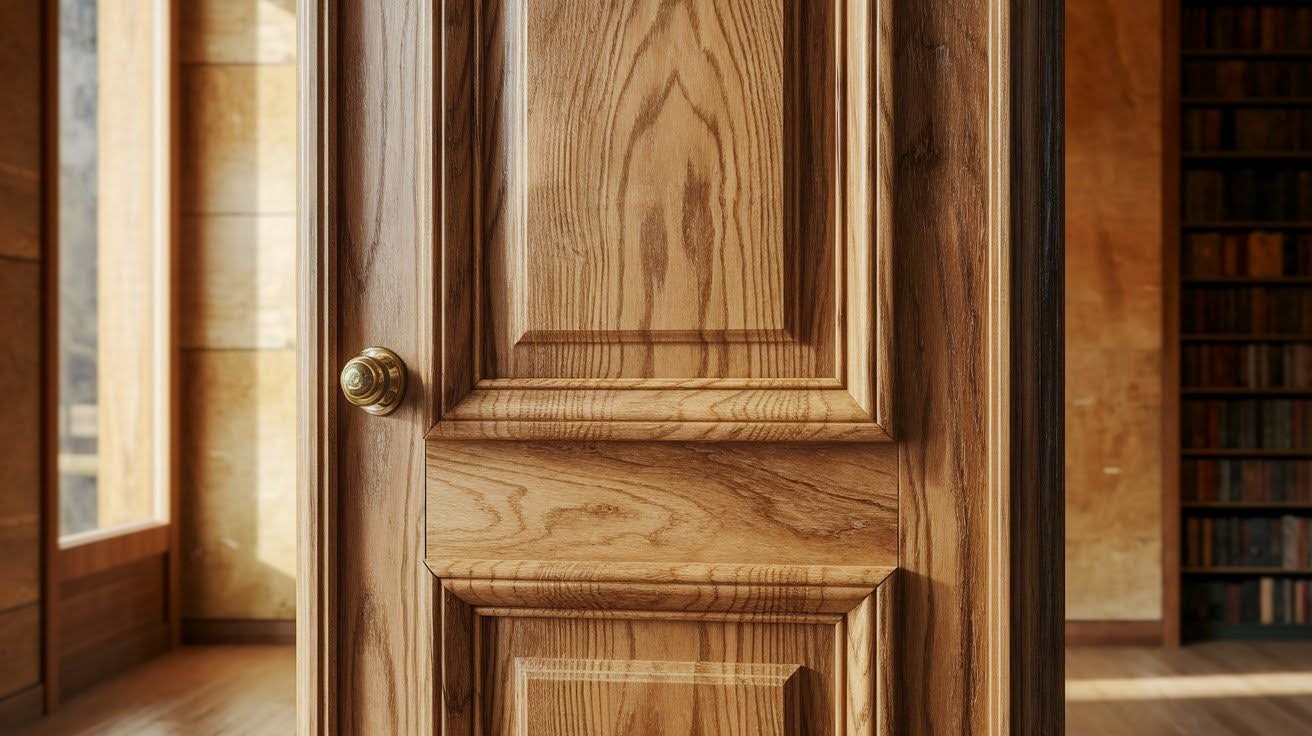
41.Solid Wood Door: Doors made entirely from natural wood, offering beauty, durability, and classic appeal while requiring regular maintenance and care.
42.Hollow-Core Door: Lightweight doors with hollow interiors and thin wood veneer surfaces, providing affordable options for interior applications where weight matters.
43.Solid-Core Door (engineered wood fiberboard): Doors with dense cores made from engineered materials, offering better sound dampening and stability than hollow-core alternatives available.
Metal Doors
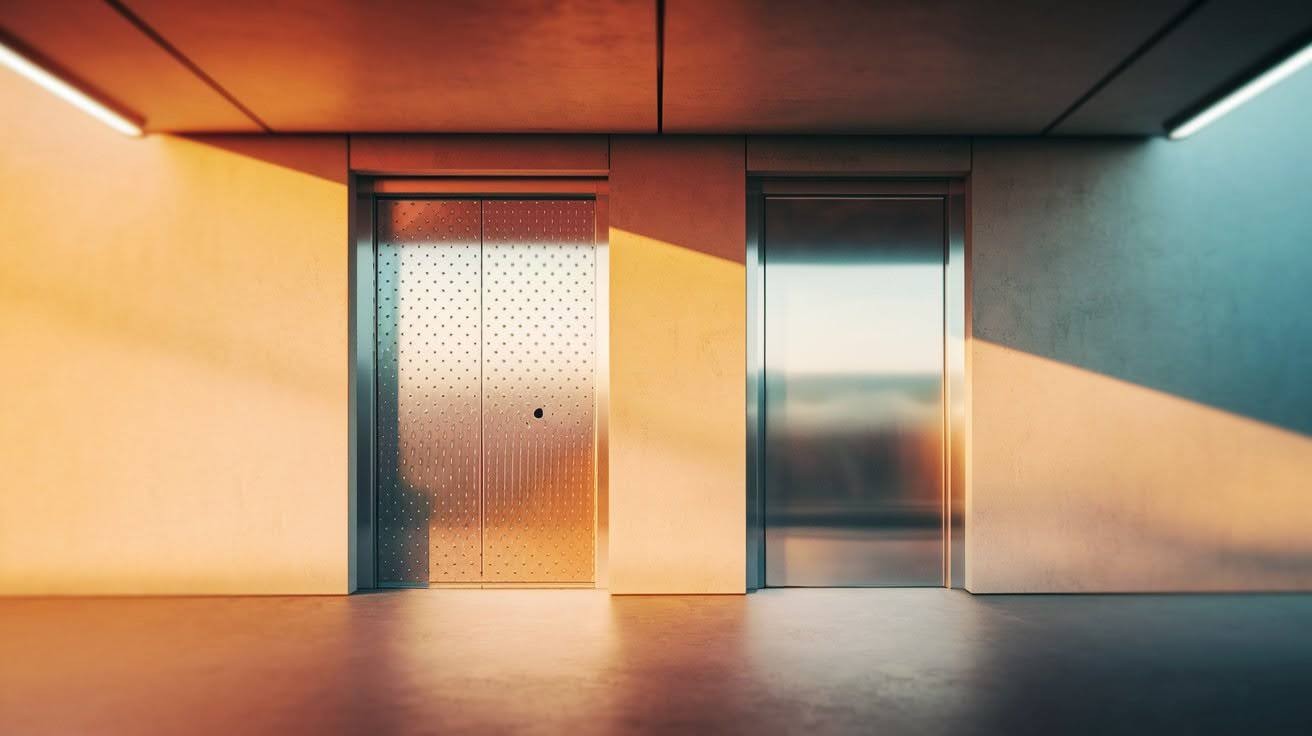
44.Steel Door: Strong doors made from steel materials, providing excellent security and weather resistance while requiring minimal maintenance over time.
45.Aluminum Door: Lightweight doors made from aluminum, resistant to rust and corrosion while offering modern looks for contemporary building designs.
Conclusion
After helping hundreds of families select from the many types of doors available, I can tell you that choosing the right balances function along with form. Layer in style preferences after you assess security requirements, daily needs.
A higher initial investment will be required for those quality materials because years of more reliable service will be delivered along with minimal maintenance costs. Test hardware physically in showrooms.
While you are there, examine all of the construction details.
Your home welcomes everything inside, so choose wisely and invest in doors that serve your family well for years ahead.
Frequently Asked Questions
What’s the difference between interior and exterior doors?
Exterior doors need weather sealing and security features for outdoor conditions. Interior doors focus on privacy and style with lighter materials.
How do I measure for a new door?
Measure width, height, and depth of your door frame opening. Check corners are square and surfaces are level for proper fit.
Which door material lasts longest?
Steel and fiberglass doors last longest with minimal maintenance. Solid wood doors need regular sealing and painting but also last decades.
Can I install doors myself?
Interior doors work for DIY projects with proper tools. Exterior doors need professional installation for weatherproofing and warranty coverage.
How much should I budget for new doors?
Interior doors cost $50-500 each. Exterior doors range $200-2000 plus installation. Include hardware and finishing in your total budget.

